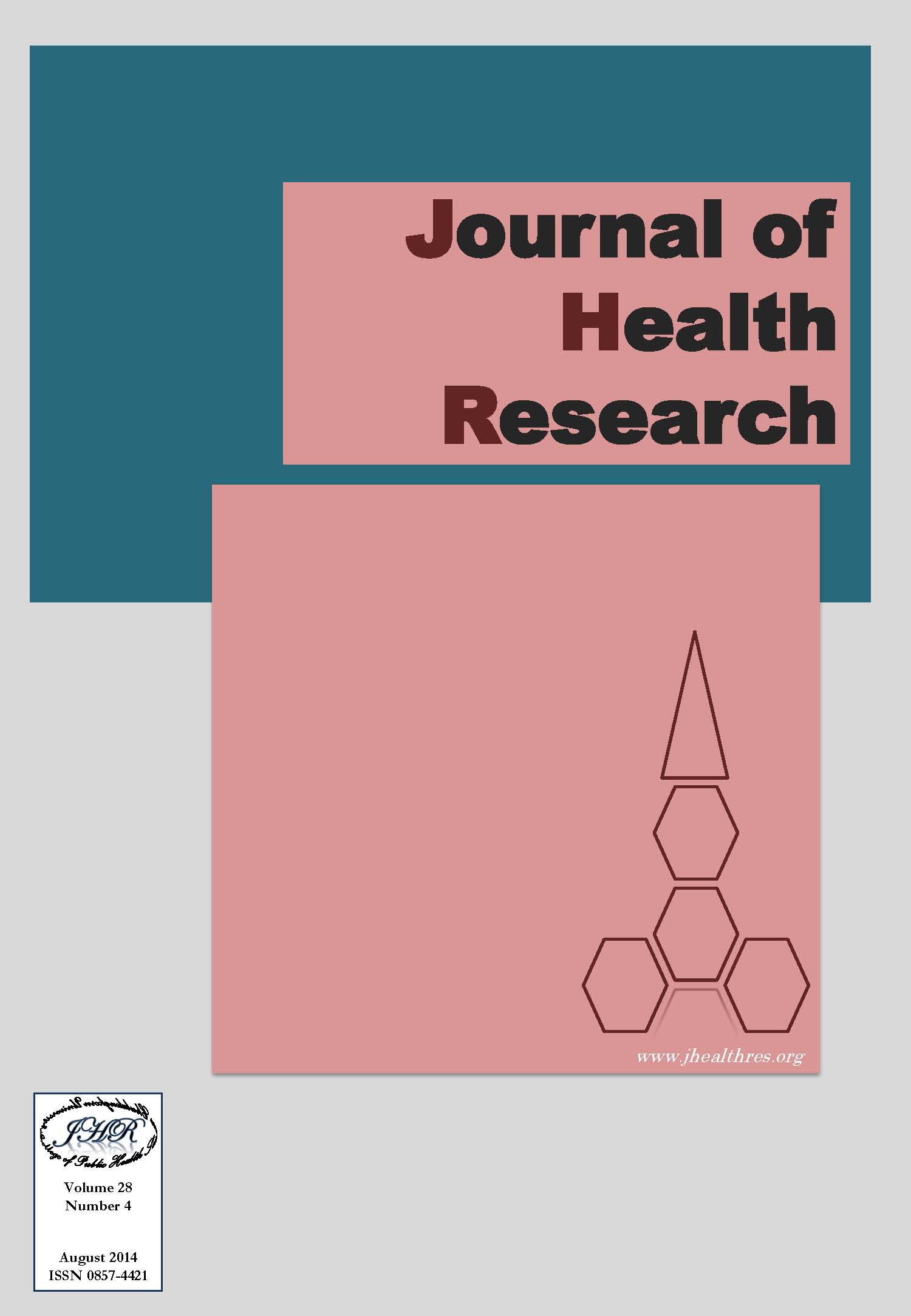Pesticide Use and Pesticide-Related Symptom Prevalence in Chinese Kale Farmers in Northeast Thailand
Keywords:
Pesticide use, Symptom prevalence, Farmers, Northeast ThailandAbstract
Food Safety Report from Bureau of Food Safety Extension and Support, Ministry of Public Health, Thailand reported that 2.76% detected unsafe pesticide residues from 62,397 vegetable and fruit samples. Pesticide residues were mostly detected in Kana (Chinese Kale) vegetable. The chemicals were used in the production particularly in Kana plantation. This prompted further study in Kana farmers. Study results showed unsafe pesticide residues in 5.6% (or 22 from 396 vegetable samples), collected by Suranakorn-Nakhonrachasima central market, which were detected as unsafe pesticide residues and 9 of 22 (40.9%) were detected unsafe in Kana samples. A cross sectional study design was used to survey pesticide use during cultivation periods in Klongtabak, Sekhiew, Nakhonrachasima province. Twenty vegetable growers were interviewed from questionnaires. Visits, meetings, conversation, and observations were also conducted. Results of vegetable growers’ symptoms were as follows: neurologic (80%), neuromuscular (75%), eye (50%) and alimentary tract (45%), respectively. Study’s results also revealed that 9 groups and 28 kinds of pesticide were used by the vegetable growers, at various periods in the cultivation, class 1 of highly toxic pesticides, 25% of total kinds used and class 2 of moderately toxic pesticides, 50 % of total kinds used. Results showed that there is possible health risk among vegetable growers from exposure and contamination to pesticides use in the field. The findings suggested that the vegetable growers should be educated for less toxic pesticide use. Preventive and control measures for vegetable safety and empowerment of users should be implemented to reduce pesticide health risk.






